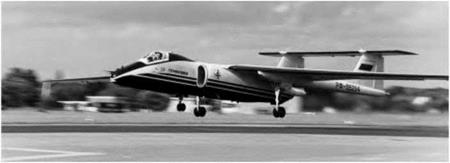Performance
|
It may seem rather illogical that we should first consider level flight, then gliding and landing, and now the take-off, climb and general performance of the aeroplane. But there is method in our madness. Tevel flight is, as it were, the standard condition of flight with which all other manoeuvres are compared. Gliding, too, involves simple fundamental principles, in some ways more elementary than those of level flight, handing we have used to illustrate the principles of flight at |
|
|
low speeds. All these have followed quite naturally one take-off is a problem on its own. |
on the other, but the |
|
Taking-off |
The pilot needs skill and practice before he can be sure of making a good takeoff, one of the main problems being to keep the aircraft on a straight and narrow path. This difficulty applies mainly to propeller-driven aircraft, and has already been discussed in Chapter 4. In general, it may be said that the object during the take-off is to obtain sufficient lift to support the weight with the least possible run along the ground. In order to obtain this result the angle of attack is kept small during the first part of the run so as to reduce the drag; then, when the speed has reached the minimum speed of flight, if the tail is lowered and the wings brought to about 15° angle of attack, the aeroplane will be capable of flight. Although by this method the aeroplane probably leaves the ground with the least possible run, it is apt to be dangerous because, once having left the ground, any attempt to climb by further increase of angle will result in stalling and dropping back on to the ground. Therefore it is necessary to allow the speed to increase beyond the stalling speed before ‘pulling-off’, and sometimes the aeroplane is allowed to continue to run in the tail-up position until it takes off of its own accord (Fig. 7A, overleaf).
The process of taking-off is largely influenced by such things as the runway surface, and although of extreme interest, the subject is too complex to be
|
|
Fig 7 A Taking-off
The Myasischev M-55 high-altitude aircraft for surveillance and geophysics research.
within the scope of this book. In order to reduce the length of run, and increase the angle of climb after leaving the ground – so as to clear obstacles on the outskirts of the airfield – the take-off will, when possible, be made against the wind. Other aids to taking-off are slots, flaps or any other devices which increase the lift without unduly increasing the drag, and, essential in propeller-driven high-speed aircraft, the variable-pitch propeller.
The question as to whether or not flaps should be used for taking-off depends upon whether the increased lift of the flap, with the resulting decrease in taking-off speed, makes up for the lower acceleration caused by the increased drag of the flap. But the problem is a little more complicated than that, because while we wish to avoid drag throughout all the take-off run, we only really need the extra lift at the end, when we are ready to take off. No doubt we could get off most quickly by a sudden application of flap at this stage, but such a method would certainly be dangerous. The lift type of flap helps the take-off considerably, other types may have some beneficial effect if used at a moderate angle, and in practice some degree of flap is nearly always used for take-off in modern high-speed types of aircraft if only because it reduces the otherwise very high take-off speed with consequent wear of tyres.
Some interesting problems arise in connection with the take-off. Modern undercarriages may tuck away nicely during flight, but when lowered they are less streamlined than a fixed undercarriage and their drag may hamper the take-off quite considerably; the lower undercarriage that can be used with jets is a great advantage in this respect. Again, just as landing speeds go up with high wing loading, so do take-off speeds, and the length of run needed to attain such speeds is liable to become excessive. The idea of catapulting is an old one but its use has mostly been restricted to carrier-borne aircraft. The assistance of rockets gives much the same effect as catapulting, but has rarely been used. Refuelling in the air does not sound like a form of assisted take-off, but it does present possibilities in that an aircraft can be taken off lightly loaded as regards fuel.
Finally, although we have considered STOL and VTOL in their effect on landing, we must not forget that they are at least as important for take-off.












